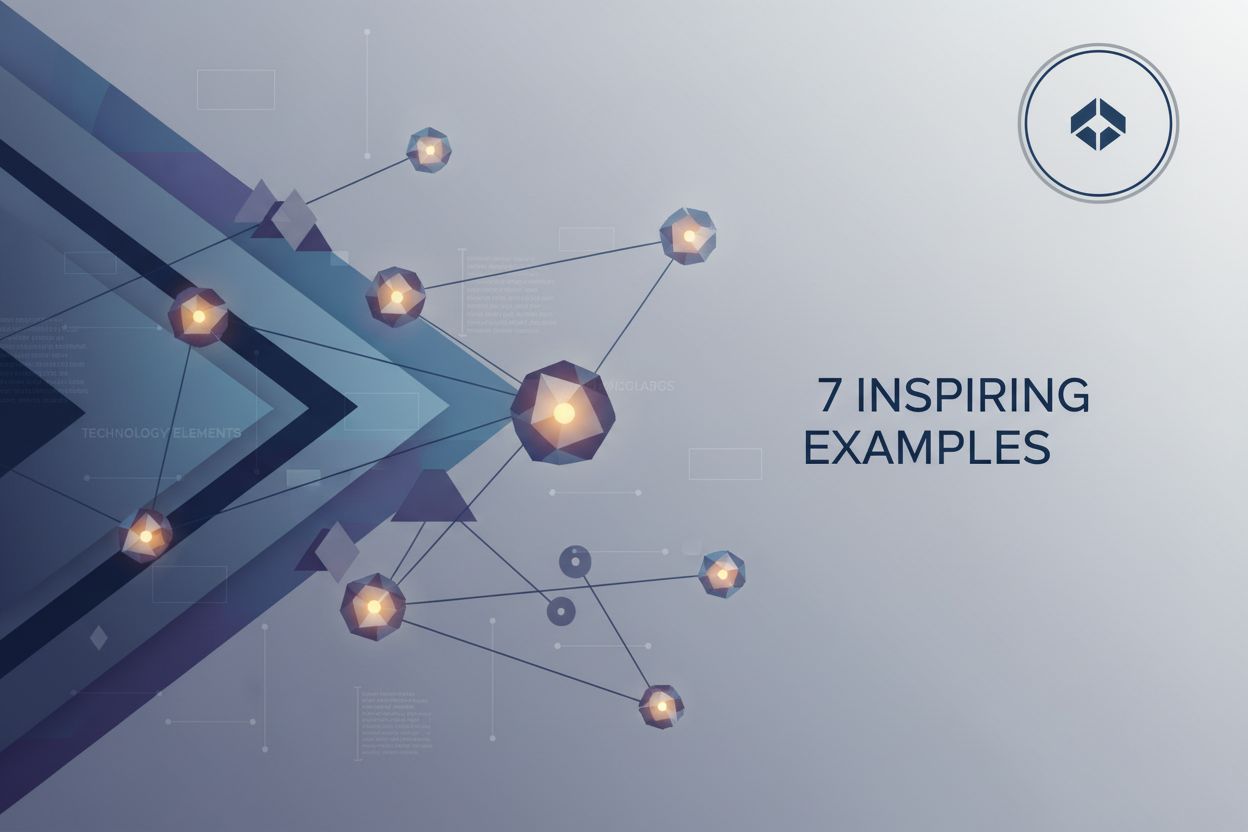Understanding the Digital Media Strategy Framework
TL;DR
What is a Digital Media Strategy Framework?
Alright, so you're staring down the barrel of "digital media strategy framework"—sounds kinda intimidating, right? But honestly, it's just about having a plan. Like, imagine trying to bake a cake without a recipe. Could work, but probably gonna be a mess.
Think of it like this: a digital media strategy framework is your blueprint for online success. It's basically a structured plan that outlines who you're trying to reach, how you're gonna reach them, and what you want them to do. Without it, well, you're just kinda throwing stuff at the wall and hoping something sticks.
A framework brings clarity and focus, like a laser beam instead of a floodlight. It gets everyone on the same page—imagine your sales team and your content creators actually agreeing on something. It makes results measurable so you know if that fancy campaign is actually paying off, or if you just burned a bunch of cash. And it stops you from wasting resources—no more throwing money at social media channels that are deader than disco.
So, what's actually in this framework thing? Here's the gist:
- Audience insights: Understanding who your people are. Demographics, sure, but also what makes 'em tick. What are their online habits? What kinda TikToks are they watching? These insights are the bedrock, informing every other decision.
- Channel selection: Choosing the right platforms. If your target demo is Gen Z, you probably want to put that LinkedIn budget somewhere else. This decision flows directly from your audience insights.
- Content strategy: Creating stuff that people actually want to see. Engaging, relevant, and not just blatant ads, y'know? This is where you bring your audience insights to life on your chosen channels.
- Measurement and analytics: Tracking what's working (and what's not). Which kpis (key performance indicators) are actually telling you something useful? KPIs are specific, measurable values that show how effectively you're achieving key business objectives. For example, conversion rate (the percentage of visitors who complete a desired action) or click-through rate (the percentage of people who click on a link). This measurement loop feeds back into your audience insights and strategy.
Well, according to Springboard, a digital marketing strategy is a roadmap to reach customers through online channels. Makes sense, right? And, as Silverback Strategies notes, a good framework helps you "build bridges between the buying signals and the ad creative".
Okay, so now you've got the basics. Next up, we'll dive into the nitty-gritty of actually building one of these things.
Why Having a Digital Media Strategy Framework is Important
Okay, so you're probably wondering why another framework is so essential. Isn't one plan enough? Well, let's just say winging it in digital media is like trying to build a house with only a hammer and a vague idea.
A digital media framework is like that friend who always knows where they're going, even in a new city–except it's for your marketing efforts. It transforms complex data into easy-to-understand visuals, making communication a breeze. Imagine trying to explain your marketing plan to the ceo without it...nightmare fuel! For example, a flowchart detailing the customer journey makes it way easier for everyone to "get it." It aligns teams like a well-rehearsed orchestra, ensuring everyone plays the same tune. Think about a healthcare provider using a framework to coordinate its marketing, patient care, and administrative teams. It strategically segments your audience, giving you valuable insights into their preferences and behaviors. What if you knew exactly what kind of content your audience wants? No more guessing games. That's what strategic segmentation delivers.
Ever feel like you're juggling too many balls at once? A framework helps you focus on what truly matters, like a laser beam instead of a scattered flashlight. It optimizes your company's resources by focusing on tasks that directly contribute to your marketing goals. This is especially crucial for startups or small businesses with limited budgets. It fosters productivity and efficiency through a focused approach. No more wasted time on dead-end projects. Instead, you are getting stuff done. It maximizes the impact of your marketing efforts by identifying the resources and channels that resonate with your customers. For example, what if you knew that your audience hates Facebook ads but loves engaging with your content on Instagram?
How do you know if your marketing is actually working? A framework allows you to measure your activities accurately and optimize your strategies for better results. It emphasizes data analytics and measurements to guide your business's key performance indicators (kpis). This data-driven approach ensures you're not just throwing money at the wall and hoping something sticks. It facilitates data-driven insights, allowing you to identify successful tactics and make informed decisions. Imagine knowing exactly which elements of your campaign are driving conversions. They can then track campaign performance, identify areas for improvement, and optimize their strategies. Key metrics such as conversion rates, click-through rates, customer acquisition cost, and customer lifetime value are tracked within frameworks to gauge the effectiveness of marketing efforts.
Think of the framework as your marketing GPS, guiding you towards success. Next up, we'll explore the core components that make up a solid digital media strategy framework.
Popular Digital Media Strategy Frameworks: An Overview
Alright, so you're thinking about frameworks, huh? Kinda like picking the right tool from a messy toolbox – some are shiny, some are rusty, but only a few actually get the job done. Let's dive into some popular options and see what's what.
First up, we got the SWOT analysis. Think of it as a quick health check for your business. It's all about figuring out your internal Strengths and Weaknesses, along with external Opportunities and Threats. It's a classic for a reason! It helps you make smart decisions and set goals. Like, if you know your strength is killer customer service, you can lean into that hard. It gives you a structure for spotting the big stuff that can make or break your biz. Maybe you got a super skilled team, or maybe there's a new market just begging for you to jump in. Sure, it's not perfect, but it's a solid starting point. It's like the first sketch of a painting – gets the basic shapes down.
Next, there's the PESTLE analysis. This one's a mouthful, but it's all about seeing the bigger picture. It looks at Political, Economic, Social, Technological, Legal, and Environmental factors. Basically, everything outside your company that could mess with your plans. It gives you a wide look at what's going on in the world that could affect your business. For example, technological advancements can drastically change how you reach your audience (think the rise of AI in content creation), and legal changes like GDPR impact how you handle customer data. It helps you get ready for changes coming down the line. Like, if new tech is gonna shake up your industry, you'll see it coming. PESTLE ain't a crystal ball, but it's pretty darn good at helping you see around corners. It's like having a weather forecast for your business – you know what storms might be brewing.
Now, let's talk competition. Porter's Five Forces is all about understanding how tough your industry is. It looks at things like new rivals popping up, suppliers trying to squeeze you, and customers demanding lower prices. The whole shebang. It helps you figure out how profitable your industry can be. It gives you the lowdown on market dynamics, so you can make smart moves. Understanding these forces can inform your digital media strategy by highlighting where you can build competitive advantages, like creating unique content that differentiates you from rivals or building strong customer loyalty to reduce the threat of new entrants.
It's not always a simple picture, but Porter's Five Forces helps you see where you stand in the food chain. It's like knowing the lay of the land in a battle – you know where the high ground is.
Okay, so you've got RACE: Reach, Act, Convert, Engage. It’s all about the customer's journey. Reach is getting their attention in the first place. Act is getting them interested enough to interact with your brand. Convert is turning them into buyers or leads. And Engage is keeping them happy and loyal long-term. This framework guides businesses in attracting and retaining customers throughout the marketing funnel. It allows marketers to tailor strategies toward customer needs and preferences at each stage.

Then there is the SOSTAC model. Includes Situation, Objectives, Strategy, Tactics, Actions, and Control. It provides a comprehensive blueprint for assessing the current situation, defining objectives, and implementing tactics. For instance, understanding your current situation might involve analyzing your website traffic and social media engagement. Your objectives could be to increase lead generation by 20%. The strategy outlines how you'll achieve this (e.g., content marketing), and tactics detail the specific actions (e.g., publishing three blog posts per week). Control involves monitoring your KPIs to ensure you're on track. It promotes clear communication, effective decision-making, and streamlined execution of marketing plans.
The 5 Cs of Marketing stand for Company, Collaborators, Customers, Competitors, and Climate. It provides a structured approach for evaluating critical factors affecting operations and marketing strategies. For example, understanding your company's internal strengths and weaknesses, the capabilities of your collaborators (like agencies), the needs of your customers, the strategies of your competitors, and the broader market climate (PESTLE factors) enables businesses to identify strengths, weaknesses, opportunities, and threats (SWOT) more effectively.
Now, how do these frameworks translate into the real world? Well, many organizations use a combination of these to get a holistic view. You see, for example, a retail chain might use SWOT to identify their strengths (strong brand) and opportunities (growing online market), then use PESTLE to anticipate economic downturns affecting consumer spending.
So, which framework is the best? Honestly, it depends on what you're trying to figure out. They're all tools, and you gotta pick the right one for the job. In the next section, we'll look into how to actually use these frameworks to build your own digital media strategy.
Building Your Digital Media Strategy Framework: A Step-by-Step Guide
Okay, so you've seen a bunch of frameworks, and you're probably thinking, "Great, but how do I actually build my own?" It's not as scary as it sounds. Think of it like putting together IKEA furniture – you got the pieces, you just need to follow the instructions.
Here’s a general approach to building your own framework:
- Define Your Core Objectives: What do you really want to achieve? Is it brand awareness, lead generation, sales, customer retention? Be specific. This is your North Star.
- Understand Your Audience Inside and Out: Who are you trying to reach? Go beyond basic demographics. What are their pain points, their desires, their online hangouts? Use tools like surveys, social listening, and website analytics. This is where your "Audience Insights" component comes from.
- Map Your Customer Journey: How do people typically discover, consider, and buy from you? This helps you identify key touchpoints and the kind of content or interaction needed at each stage. This naturally leads into the RACE framework's stages.
- Select Your Channels Wisely: Based on your audience and objectives, which platforms will be most effective? Don't try to be everywhere. Focus your resources where they'll have the biggest impact. This is your "Channel Selection."
- Develop Your Content Strategy: What kind of content will resonate with your audience at each stage of their journey? This needs to be engaging, valuable, and aligned with your brand voice. This forms your "Content Strategy."
- Establish Your Measurement Plan: How will you track success? Define your key performance indicators (KPIs) for each objective. What data will you collect, and how often? This is your "Measurement and Analytics" component.
- Integrate and Refine: Look at how these pieces fit together. Does your content strategy support your objectives? Are your chosen channels the best way to reach your audience? This is where you might bring in elements of other frameworks. For example, a SWOT analysis can help identify your unique strengths to leverage in your content, or PESTLE can highlight external factors that might influence your channel choices. The goal is to create a cohesive, interconnected system.
Remember, building a framework isn't a one-and-done deal. It's an iterative process. You'll constantly be learning, adapting, and refining as you go.
Next up, we'll talk about how [GetDigitize](https://getdigitize.com) can help you build your brand!
Case Studies: Real-World Examples of Framework Implementation
Okay, so you got all this framework stuff down, but how does it actually play out in the real world, right? It's not just theory; companies are using this stuff to get ahead.
Imagine a smaller e-commerce brand. They might use SWOT analysis to figure out they are good at customer service but struggle with high shipping costs. So, they could look at ways to use the customer service to their advantage (maybe free returns?) and find a different shipping partner. This is how SWOT leads to actionable insights. They identified a strength (customer service) and a weakness (shipping costs) and brainstormed solutions that leverage the strength to mitigate the weakness.
Now, think about a software-as-a-service (saas) company. What if they are using the RACE framework?
- First, they reach you with some cool blog content about industry challenges.
- Then, they try to get you to act by signing up for a free trial of their software.
- Next, they are hoping you convert to a full-blown customer by purchasing a subscription.
- Finally, they engage you with ongoing support, tutorials, and community forums to keep you happy and reduce churn.
It's all about moving you through the funnel, and it's a pretty common thing to see. It's not rocket science, but it needs a plan.
So, there you have it – a couple of quick looks at how this stuff works when the rubber hits the road. Hopefully, this helps you see how these aren't just fancy words, but tools to use.







